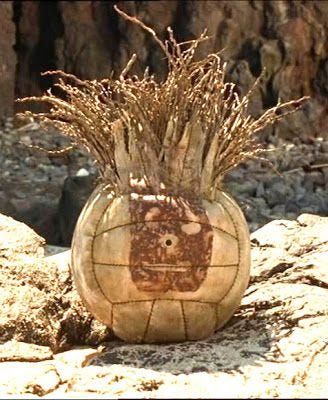When An Object Becomes Something More
The Literary Device Known as “Endowed Object”
When I was in my MFA program I was introduced to a number of new-to-me literary devices. One of my favorites is the “endowed object”.
There’s no true formal definition, but in basic terms it’s a physical object that represents something emotionally resonant, an objective reminder of the character's inner journey. I love using them and love recognizing them when they pop up in a work of fiction.
And it’s different from another literary device, the macguffin. A macguffin is “an object, device, or event that is necessary to the plot and the motivation of the characters, but insignificant, unimportant, or irrelevant in itself”.
The endowed object is anything but insignificant.
Recently a client asked me whether the endowed object needed to be lost during the protagonist’s moment of darkest despair – or the “dark night of the soul” that is close to the climax – representing the character’s loss of what was most precious during their ordeal. That idea gave me food for thought.
Examples of Endowed Objects
Here’s a small list of endowed objects so you can see what the object can mean (spoiler alert!):
Harry Potter’s wand (Harry Potter) – so much symbolic meaning there, from his initiation as a wizard, to its substance (holly wood, phoenix feather), to its importance as power/protection and connection to his parents. His wand is broken late in the story, and he has to find a substitute. His refusal to keep Voldemort’s Elder wand shows that Harry is immune to the seduction of power.
Chuck’s volleyball Wilson (Castaway) – Wilson is a true endowed object, given “life” by Chuck to the point where it is his personable companion during his long ordeal. And yes, Wilson is lost during Chuck’s “all is lost” moment. But Chuck brings Wilson back to life in a transformed fashion, just as Chuck is brought back to life at the end of the movie
Arya’s Stark’s Needle (Game of Thrones) – Needle is the sword given to Arya by Jon, her brother, and with which she learns to fight. The gift is a gift of both love and respect, and though it is not the sword with which she kills the Night King, it is endowed with the power of her growth and skill, and with the power of family bonds.
Kat’s chatelain (Charmed Children of Rookskill Castle) – this one is personal, as I intended the chatelain to be endowed with Kat’s love of family and the power of that love. And while it is not lost during the Kat’s darkest moment, she does lose it for a time resulting in a serious turning point. The power of the chatelaine is used to render the antagonist helpless at the crisis moment.
How To Use Endowed Objects
I've always used endowed objects as touchstones and as representations of what is most important to the main character – and it’s interesting how often that turns out to be a representation of love and/or family, as you can see from the examples above.
My feeling is that an endowed object can be used as you see fit. I don't think just "losing" it is enough to define it – the object has to have significance beyond the loss - a separation from the past, or a connection that needs to be momentarily severed and then renewed in a different way.
Bottom Line
An endowed object has resonance between writer and reader and so can be used in multiple ways. It represents something crucial and deeply emotional to the main character, and in that way the reader unconsciously connects to that emotional representation every time the endowed object appears on the page.
Connect With Me
My own personal “endowed object” is the collection of craft techniques and writing skills that I’ll be adding to my mentorship/membership, the Fox’s Den. My hope is to launch the Den in January, so if you are curious, keep in touch.




Coming up with physical symbols that are tied to characters is one of my favorite parts of planning a novel. The current object I'm working with is an old cracked viola that's in serious danger of falling apart.